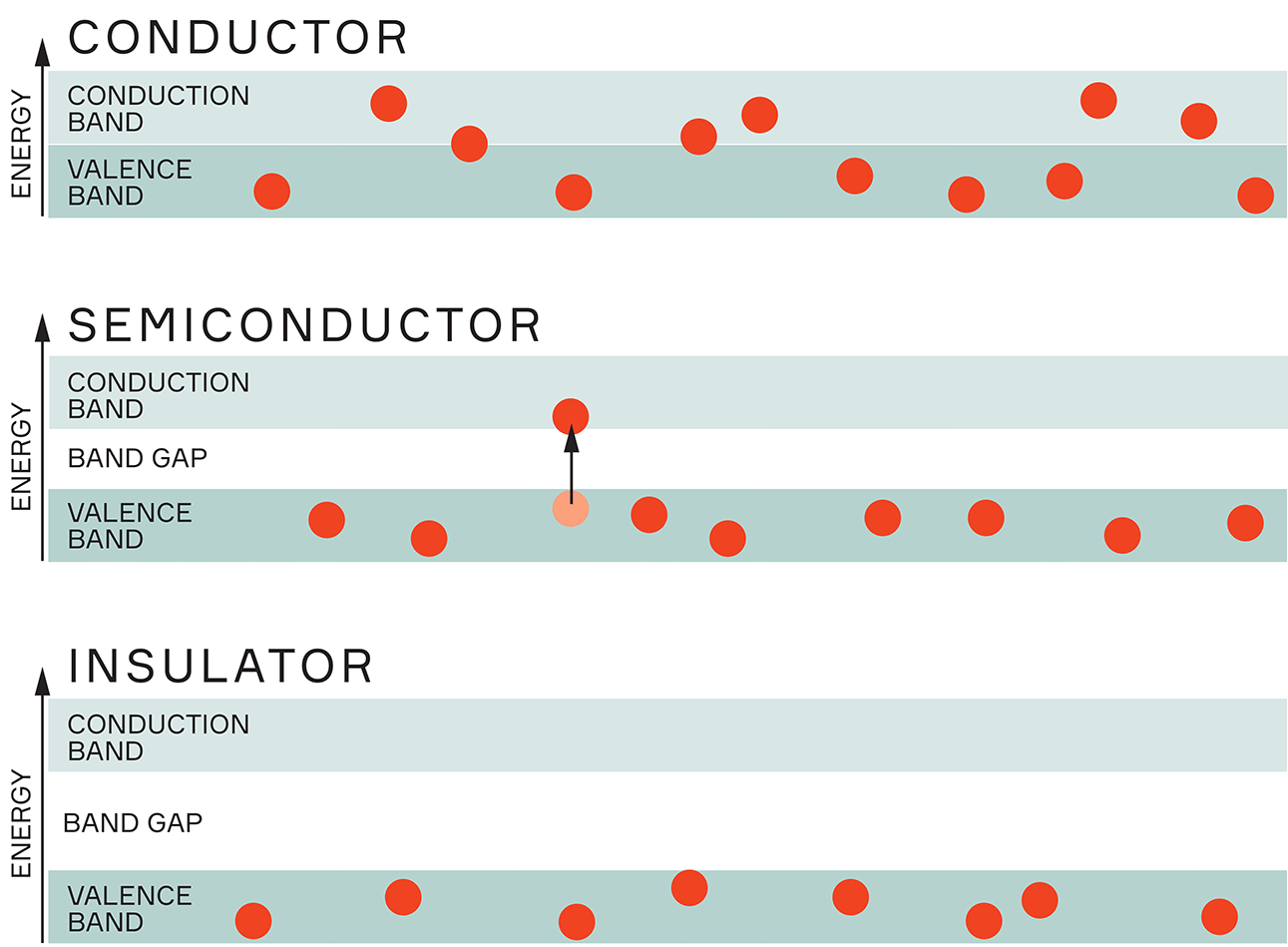What Is Silicon Carbide?
Silicon carbide is a chemical compound that offers numerous benefits as a semiconductor material in the high-voltage environment of today’s electric vehicles. Compared with traditional silicon, silicon carbide can reduce losses in voltage and current while improving thermal efficiency — all of which can help reduce the size and weight of essential power electronic components in EVs.
These properties become increasingly important as EV architectures move from 400 Volts to 800 Volts and beyond to enable DC fast charging and improve thermal management.
Closing the gap for high voltage
The reason for silicon carbide’s higher performance is its wide bandgap. An important property of materials used in electrical and electronic devices, bandgap refers to the energy required for an electron to move from the valence band of an atom to the conduction band. Bandgap determines whether a material is a conductor, an insulator or a semiconductor.
Conductors have an overlapping bandgap, meaning the electrons are able to move freely from the valence band to the conduction band. Insulators have a very wide bandgap, such that it would take a prohibitive amount of energy for the electrons to jump the gap from the valence band to the conduction band. Semiconductor bandgaps are in between those of insulators and conductors.
Think of bandgap as the number of lanes on a highway between the slowest lane of traffic and the fastest lane. The wider the gap, the more energy it takes for a vehicle to move to the fast lane; likewise, in materials with a wide bandgap, it takes more energy for electrons to move from the valence band to the conduction band.

A material with a wide band gap requires more energy to become conductive.
In high-voltage applications, a wider bandgap is desirable because it is essential for a semiconductor to maintain some resistance to serve as an intermediate between conductors and insulators. The larger distance allows devices to operate at higher voltages, temperatures and frequencies.
The bandgap of silicon carbide is about three times wider than that of silicon, allowing it to handle voltages up to 10 times greater and making it ideal for applications such as vehicle propulsion.
Thermal management in high-voltage applications
When it comes to high-voltage applications, one of the most important challenges to overcome is thermal management. Standard silicon semiconductors do not conduct a current at room temperature unless a significant charge is applied. However, in higher energy states, such as in high-temperature settings, there is a greater chance of electrons jumping the band.
With an operating temperature range up to 300° C – compared with silicon’s 175° C limit – silicon carbide has the potential to reduce the dependency on active cooling systems, which add weight, cost and complexity to EVs.
Shifting gears to silicon carbide
The transition away from silicon is not without resistance. Silicon is less expensive to produce and has fewer capacity restrictions. Silicon carbide is very rare naturally and has to be synthesized. It is one of the hardest substances in existence, which means diamond-tipped blades are required to cut it. While silicon carbide has been used since the 1980s in industrial manufacturing, the automotive industry only began using it recently, and the manufacturing process needs to be made more efficient to keep pace with rising demand.
Despite these challenges, other industries have achieved cost benefits from incorporating silicon carbide. For example, in solar panel applications, utilizing silicon carbide in place of traditional silicon inverters can result in up to 10 percent cost savings due to the higher efficiency of the material.
Correctly sizing silicon carbide — in other words, sourcing material variants with the correct performance specifications for the desired application — requires unique expertise. A system-level approach is essential to balance tradeoffs between the cooling costs and the material costs and to improve performance and efficiency. Our experience as a system integrator makes Aptiv well suited to help proliferate silicon carbide for automotive applications, including its use in DC-to-DC converters and onboard chargers.
